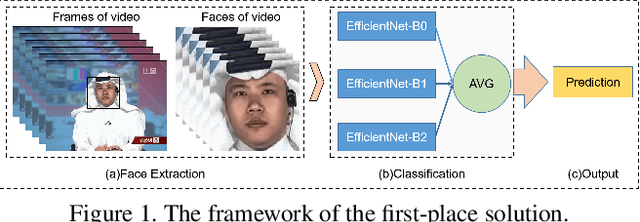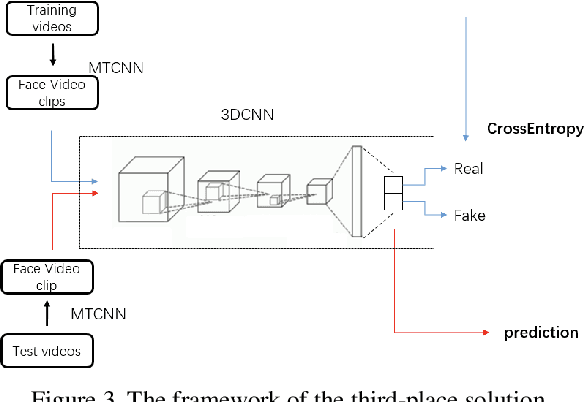Zhengkui Guo
DeeperForensics Challenge 2020 on Real-World Face Forgery Detection: Methods and Results
Feb 18, 2021



Abstract:This paper reports methods and results in the DeeperForensics Challenge 2020 on real-world face forgery detection. The challenge employs the DeeperForensics-1.0 dataset, one of the most extensive publicly available real-world face forgery detection datasets, with 60,000 videos constituted by a total of 17.6 million frames. The model evaluation is conducted online on a high-quality hidden test set with multiple sources and diverse distortions. A total of 115 participants registered for the competition, and 25 teams made valid submissions. We will summarize the winning solutions and present some discussions on potential research directions.
Placepedia: Comprehensive Place Understanding with Multi-Faceted Annotations
Jul 17, 2020



Abstract:Place is an important element in visual understanding. Given a photo of a building, people can often tell its functionality, e.g. a restaurant or a shop, its cultural style, e.g. Asian or European, as well as its economic type, e.g. industry oriented or tourism oriented. While place recognition has been widely studied in previous work, there remains a long way towards comprehensive place understanding, which is far beyond categorizing a place with an image and requires information of multiple aspects. In this work, we contribute Placepedia, a large-scale place dataset with more than 35M photos from 240K unique places. Besides the photos, each place also comes with massive multi-faceted information, e.g. GDP, population, etc., and labels at multiple levels, including function, city, country, etc.. This dataset, with its large amount of data and rich annotations, allows various studies to be conducted. Particularly, in our studies, we develop 1) PlaceNet, a unified framework for multi-level place recognition, and 2) a method for city embedding, which can produce a vector representation for a city that captures both visual and multi-faceted side information. Such studies not only reveal key challenges in place understanding, but also establish connections between visual observations and underlying socioeconomic/cultural implications.
 Add to Chrome
Add to Chrome Add to Firefox
Add to Firefox Add to Edge
Add to Edge